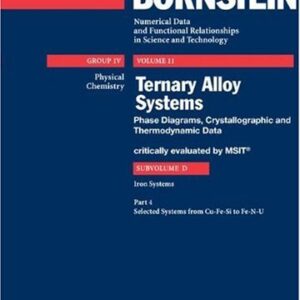Content: Note continued: 14.1.Introduction — 14.2.Chemiluminescence — 14.2.1.Reaction Triggering — 14.3.Bioluminescence — 14.3.1.Firefly Bioluminescence — 14.3.2.Bacterial Bioluminescence — 14.4.Biosensors Generalities — 14.5.Immunosensor Generalities — 14.6.Analytical Applications — 14.6.1.Chemiluminescent Biosensors — 14.6.2.Electrochemiluminescent Biosensors — 14.6.3.Chemiluminescent Immunosensors — 14.6.4.Electrochemiluminescent Immunosensors — 14.6.5.Electrochemiluminescent DNA Sensors — 14.6.6.Bioluminescent Biosensors — 14.7.Conclusion — References — ch. 15 Cell-based Bioluminescent Biosensors / Aldo Roda — 15.1.Introduction — 15.2.Design and Construction of Bacterial Cell-based Bioluminescent Biosensors — 15.2.1.Regulation of Reporter Gene Expression — 15.2.2.Reporter Genes and Their Attributes — 15.2.3.Advantages and Limitations of Bacterial Cell-based Bioluminescent Biosensors — 15.3.Applications of Bacterial Cell-based Bioluminescent Biosensing Systems — 15.4.Bioluminescent Biosensors: the Eukaryotic Alternative — 15.4.1.Yeast-based Biosensors — 15.4.2.Bioluminescent Cell-based Assays for Endocrine Disruptors Monitoring — 15.4.3.Bioluminescent Yeast and Mammalian Cell-based Assays for Genotoxic Compounds and ADMET Studies — 15.4.4.Bioluminescent Mammalian Cell-based Biosensors as Functional Detection Systems — 15.5.Multiplexed and Multicolor Assays — 15.6.Miniaturization of Cell-based Biosensing Systems — 15.7.Conclusions and Future Potential — Acknowledgements — References — ch. 16 Miniaturized Analytical Devices Based on Chemiluminescence, Bioluminescence and Electrochemiluminescence / Jason Y. Park — 16.1.Introduction — 16.2.Fabrication Methods for Microchips — 16.3.Microchip Components — 16.4.Advantages of Microchips for Analysis — 16.5.Applications of Microchip Analytical Devices — 16.5.1.Chemiluminescence — 16.5.2.Bioluminescence — 16.5.3.Electrochemiluminescence — 16.6.?TAS Chips — 16.7.Microarray Chips — 16.8.Flow Injection Analysis (FIA) on Microchips — 16.9.Capillary Electrophoretic Analysis (CE) on Microchips — 16.10.Point-of-care Applications for Microchips — 16.11.Conclusions — References — ch. 17 Recent Analytical Application Areas of Chemiluminescence and Bioluminescence / Aldo Roda — 17.1.Introduction — 17.2.Forensic Sciences — 17.2.1.Luminol Test for Bloodstain Detection — 17.2.2.Factors Affecting the Luminol Test — 17.2.3.Improvement of the Luminol Test — 17.2.4.Other Applications of the Luminol Test — 17.3.Detection of Explosives — 17.3.1.Analysers Based on the NO-Ozone CL Reaction — 17.3.2.Analysers Based on the Luminol CL Reaction — 17.3.3.Direct Detection of Degradation Products of Nitrated Explosives — 17.3.4.Detection of Explosives by Gas Chromatography — 17.3.5.Detection of Explosives by Liquid Chromatography — 17.3.6.Detection of Explosives by Immunoassays — 17.4.Study and Conservation of Cultural Heritage — 17.4.1.Detection of Microbial Contamination by BL Imaging — 17.4.2.Detection and Localization of Proteins in Artworks by CL Imaging Microscopy — 17.4.3.Dating of Ancient Bones — References

![[PDF] Chemiluminescence and bioluminescence : past, present and future A Roda](https://pdfelite.com/wp-content/uploads/2024/04/22d05b255e4d19a9e8724847414e571d-d.jpg)




Reviews
There are no reviews yet.